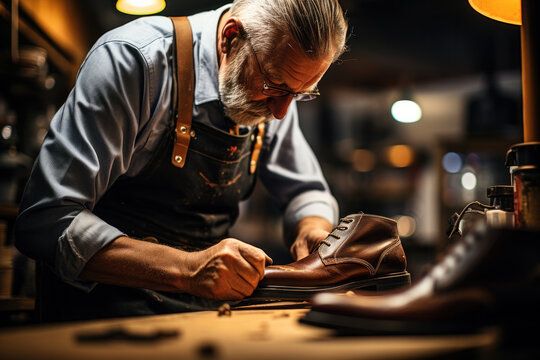Leather is a luxurious and durable material that can last for years with proper care. Whether it's your favorite leather jacket, handbag, or shoes, maintaining your leather pieces ensures they remain in top condition and continue to look great over time. Here’s a comprehensive guide on how to care for and maintain your leather items.
1. Regular Cleaning
Keeping your leather pieces clean is essential for their longevity. Here's how to do it:
- Dust Removal: Use a soft, dry cloth to gently wipe away dust and dirt from the surface. For crevices and stitching, use a soft brush.
- Spot Cleaning: For minor stains, dampen a cloth with lukewarm water and gently wipe the area. Avoid soaking the leather. For tougher stains, use a mild soap solution (like a few drops of baby shampoo in water) and wipe gently.
2. Conditioning
Leather can dry out and crack over time. Conditioning keeps it soft and supple:
- Choose the Right Conditioner: Use a leather conditioner specifically designed for your type of leather (aniline, nubuck, suede, etc.).
- Application: Apply a small amount of conditioner to a soft cloth and rub it into the leather in circular motions. Allow it to absorb for a few hours, then wipe off any excess with a clean cloth.
3. Protection
Protect your leather from damage caused by water, stains, and UV rays:
- Waterproofing: Use a leather protector spray to make your items water-resistant. This is especially important for shoes and outdoor gear.
- Stain Prevention: Treat your leather with a stain repellent to guard against spills. Be sure to follow the product instructions carefully.
- UV Protection: Prolonged exposure to sunlight can fade leather. Keep leather items away from direct sunlight and use a UV protectant spray if necessary.
4. Storage
Proper storage is crucial to maintaining the shape and quality of your leather pieces:
- Cool, Dry Place: Store leather items in a cool, dry place away from direct heat sources and humidity.
- Avoid Plastic Bags: Never store leather in plastic bags, as they can trap moisture and lead to mildew. Use breathable fabric bags instead.
- Shape Maintenance: For shoes, use shoe trees to help retain their shape. Hang jackets on padded hangers to avoid creases and use tissue paper to stuff handbags.
5. Handling Wet Leather
If your leather gets wet, it's important to handle it correctly to prevent damage:
- Drying: Let wet leather air dry naturally at room temperature. Avoid using direct heat sources like hair dryers or radiators.
- Conditioning Post-Drying: Once the leather is dry, apply conditioner to restore moisture and prevent cracking.
6. Dealing with Scratches and Scuffs
Minor scratches and scuffs are common with leather use. Here’s how to manage them:
- Buffing: Use a soft, dry cloth to gently buff out light scratches.
- Leather Polish: For deeper scuffs, apply a leather polish or balm that matches the color of your leather. Follow the instructions on the product for best results.
7. Professional Care
For severe stains, deep cleaning, or repairs, it’s best to seek professional help:
- Professional Cleaning: Consider professional leather cleaning services for items that are heavily soiled or have difficult-to-remove stains.
- Repairs: For tears, holes, or significant damage, take your leather items to a professional leather repair specialist.
Common Mistakes to Avoid
To ensure the longevity of your leather pieces, avoid these common mistakes:
- Using Harsh Chemicals: Avoid using household cleaners, alcohol, or any harsh chemicals on leather, as they can damage the material.
- Overloading Bags: Don’t overstuff leather bags, as this can stretch the leather and damage the shape.
- Neglecting Maintenance: Regular cleaning and conditioning are key. Don’t wait until your leather looks worn out before you start caring for it.
Conclusion
Leather pieces are an investment that, with proper care, can last a lifetime. By regularly cleaning, conditioning, and protecting your leather items, you can keep them looking as good as new. Remember to store them properly, handle wet leather with care, and seek professional help when necessary. With these tips, your leather jackets, bags, shoes, and accessories will remain stylish and durable for years to come.

